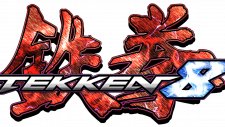Monopoly Logo
Monopoly, a renowned board game, immerses players in the world of real estate trading. Participants journey around the board, purchasing properties, and levying rents. As they strategize, they can also land on specific squares, prompting actions like paying taxes or drawing ‘Chance’ cards. Players can amass wealth by forming monopolies, resulting in higher rents. However, bankruptcy threats lurk, and one’s fortunes can pivot rapidly. Savvy dealings, trades, and a dash of luck determine the magnate who reigns supreme. A blend of strategy and chance, Monopoly offers endless hours of competitive fun.
Meaning and history
Monopoly, a board game symbolizing capitalist endeavors, traces its roots back to 1903. Elizabeth Magie, aiming to illustrate the consequences of land monopolization, created “The Landlord’s Game”. This early edition championed progressive values, emphasizing the perils of property concentration. However, the game’s narrative shifted in the 1930s when Charles Darrow, encountering a homemade version, modified and commercialized it as “Monopoly”. He sold it to Parker Brothers, who became its sole publishers after settling patent disputes.
Monopoly’s success skyrocketed globally, with numerous editions and themes being produced. Its iconic tokens, properties named after Atlantic City locations, and elements like ‘Go to Jail’ became cultural touchstones. Yet, the game’s contentious origins, involving intellectual property disputes and uncredited inventors, echo its central theme of monopolization. Despite controversies, Monopoly remains a household name, teaching countless players about trade, negotiation, and strategy while providing endless entertainment.
1935 – 1985
The inaugural Monopoly logo showcased bold, dark characters set against a vivid crimson backdrop. This fiery shade wasn’t just eye-catching; it was a powerful commentary on the disparities of wealth and the divisive nature of monopolistic practices. The intense red hue further represented dominance and the power dynamics between affluent elites and the underprivileged. Contrasting this, the dark-toned typography epitomized the enduring nature of wealth and the universal ambition among players to achieve financial solidity. Every element in this design, from color choices to typography, was meticulously chosen to reflect the game’s core themes and the societal issues it sought to highlight. Through this design, the creators ensured that the game’s message was both visually and symbolically pronounced.
1985 – 2008
After enduring protracted legal skirmishes with Ralph Anspach, Parker Brothers solidified their exclusive claim to the Monopoly trademark in 1984. The insignia underwent a captivating transformation. The fiery backdrop morphed into a softer shade, its edges became more refined, and a subtle frame was incorporated. The typography transitioned to a pristine white, and intriguingly, from the core “O” emerged a tycoon, seemingly beckoning onlookers to a fresh adventure.
This revamped logo signified a paradigm shift. Instead of centering around the anti-monopolistic message, the focus was now on leisure and delightful engagement through the medium of the board game. The symbol prompts players to take a harmless gamble and immerse themselves in the persona of a distinguished business mogul, exploring the intricacies of affluence in a playful environment.
2008 – 2013
A swifter dice variant got introduced to the traditional game mode. The logo underwent a dynamic overhaul, exuding a contemporary and volumetric feel. The crimson backdrop now resembles a welcoming gateway. The tycoon, with direct eye contact, reaches out to the player, beckoning them into a realm brimming with affluence, rivalry, and limitless prospects. He interacts with participants as equals, implying that anyone can rise to prominence and secure a commanding stature within the gameplay.
Shadowing this magnate, skyscrapers typical of American cities stand tall. Given that Atlantic City’s avenues inspired the game’s layout, it’s plausible that these very streets are artistically represented in the emblem, painting a vivid picture of urban ambition and legacy.
2013 – 2017
Hasbro engaged their digital community, seeking their opinions, and subsequently revised the gameplay guidelines. In the revamped emblem, the depiction of tall buildings was omitted, spotlighting solely the tycoon and the title. As the years rolled into the 2000s, an array of game adaptations surfaced. Distinct regions incorporated their indigenous streets and landmarks; thus, the emblematic American high-rises no longer held universal relevance. It was a reflection of the game’s evolution, showcasing how Monopoly had adapted and integrated diverse cultural nuances, making it a global phenomenon, transcending geographical boundaries. The logo’s simplification mirrored this international embrace.
2017 – Today
In 2017, an updated collection of game tokens graced the board, their selection influenced by a public poll. Yet, the iconic tycoon figure vanished from the emblem, seen as a relic of times gone by. The sartorial choices of the affluent, such as top hats, tailcoats, and walking sticks, have transitioned over the decades. The logo’s text, standing subtly elevated against the crimson backdrop, draws parallels with intricately sculpted ice sculptures, hinting at the ephemeral nature of riches. This redesign underscored the game’s ability to evolve while subtly commenting on the fleeting essence of prosperity in today’s age.
















